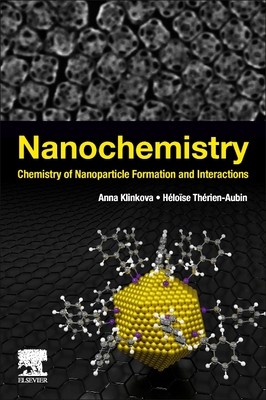
- We will send in 10–14 business days.
- Author: Anna Klinkova
- Publisher: Elsevier
- ISBN-10: 0443214476
- ISBN-13: 9780443214479
- Format: 15.2 x 22.9 x 1.4 cm, softcover
- Language: English
- SAVE -10% with code: EXTRA
Reviews
Description
Nanochemistry: Chemistry of Nanoparticle Formation and Interactions provides an overview of the chemistry aspects of nanoparticle science, including nanoparticle synthesis, chemical properties, stability, applications and self-assembly behaviour. The critical concepts discussed in this book represent the necessary toolbox for enabling the rational design of nanoparticle-based materials for target applications. After an introduction to standard analytical techniques used for nanoparticle characterization, four separate chapters are dedicated to inorganic, organic and polymer nanoparticles and carbon nanostructures to highlight the synthetic protocols, structural intricacies and chemical properties specific to each of these material classes. Physicochemical phenomena governing self-assembly behaviour of nanoparticles are also discussed in detail separately.
The book is intended for senior undergraduate, graduate and postgraduate students and research scientists in nanoscience and nanotechnology, material science, chemistry, physics, biomedical sciences and relevant engineering fields that want to develop a deeper understanding of the governing chemical principles on the nanoscale.
EXTRA 10 % discount with code: EXTRA
The promotion ends in 20d.03:11:32
The discount code is valid when purchasing from 10 €. Discounts do not stack.
- Author: Anna Klinkova
- Publisher: Elsevier
- ISBN-10: 0443214476
- ISBN-13: 9780443214479
- Format: 15.2 x 22.9 x 1.4 cm, softcover
- Language: English English
Nanochemistry: Chemistry of Nanoparticle Formation and Interactions provides an overview of the chemistry aspects of nanoparticle science, including nanoparticle synthesis, chemical properties, stability, applications and self-assembly behaviour. The critical concepts discussed in this book represent the necessary toolbox for enabling the rational design of nanoparticle-based materials for target applications. After an introduction to standard analytical techniques used for nanoparticle characterization, four separate chapters are dedicated to inorganic, organic and polymer nanoparticles and carbon nanostructures to highlight the synthetic protocols, structural intricacies and chemical properties specific to each of these material classes. Physicochemical phenomena governing self-assembly behaviour of nanoparticles are also discussed in detail separately.
The book is intended for senior undergraduate, graduate and postgraduate students and research scientists in nanoscience and nanotechnology, material science, chemistry, physics, biomedical sciences and relevant engineering fields that want to develop a deeper understanding of the governing chemical principles on the nanoscale.


Reviews